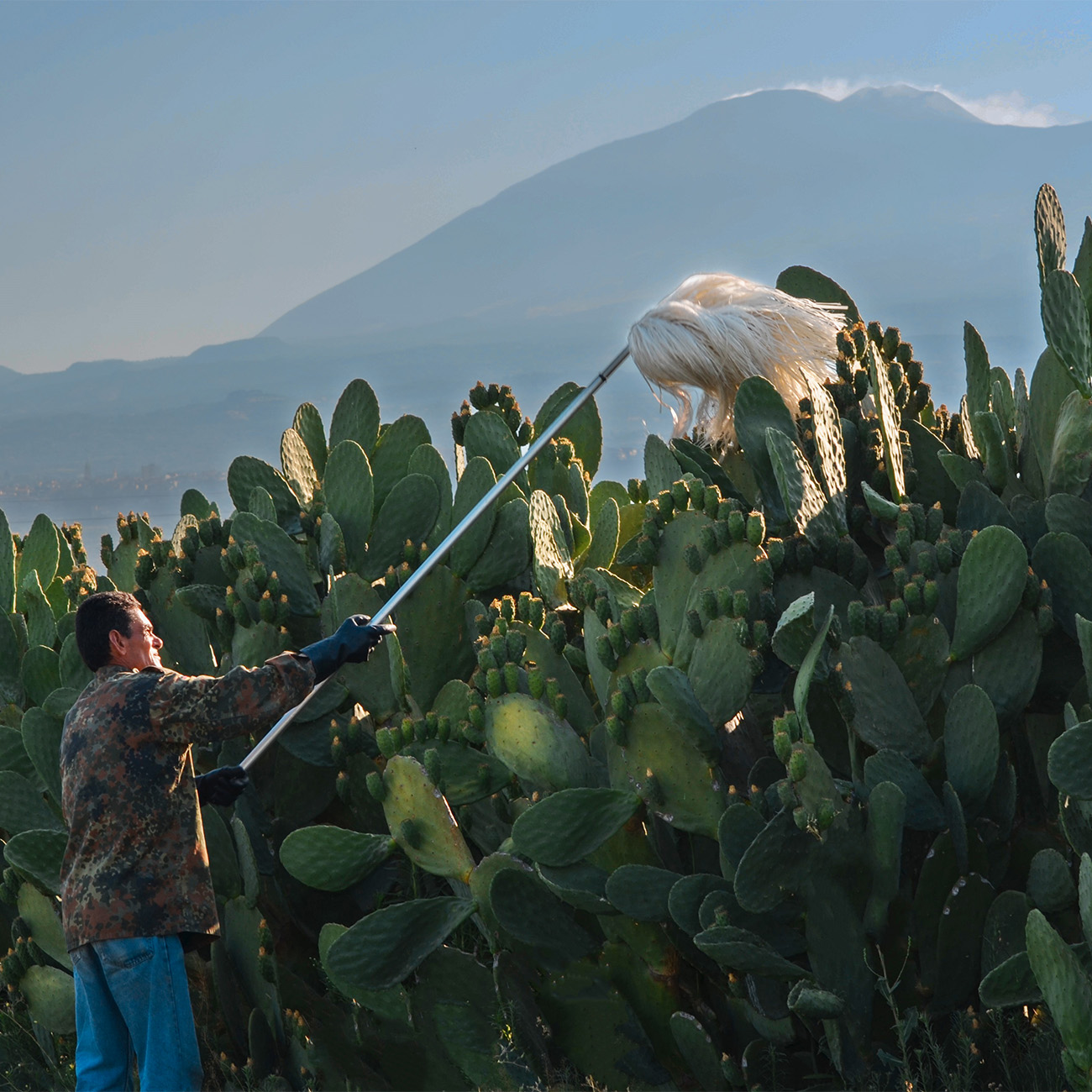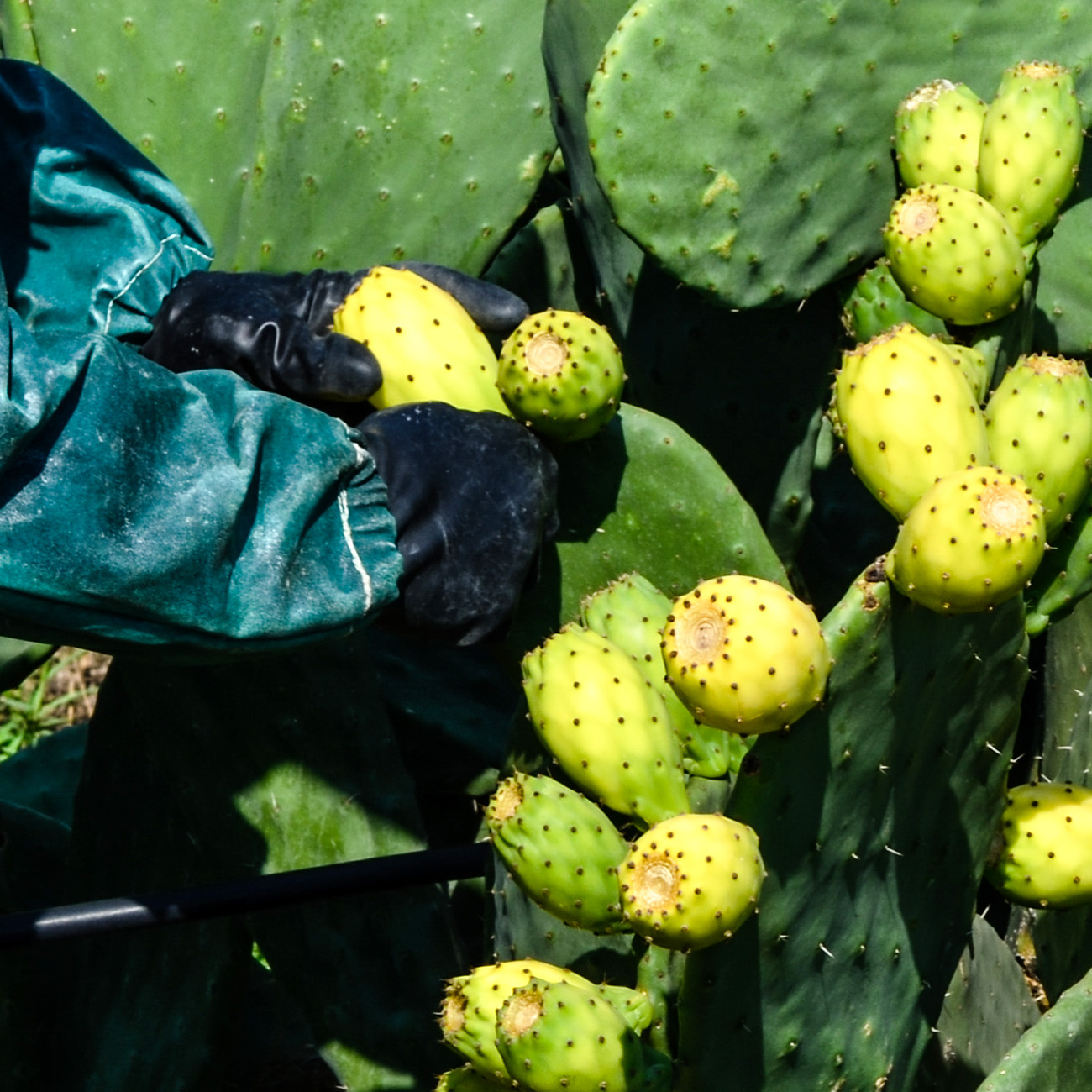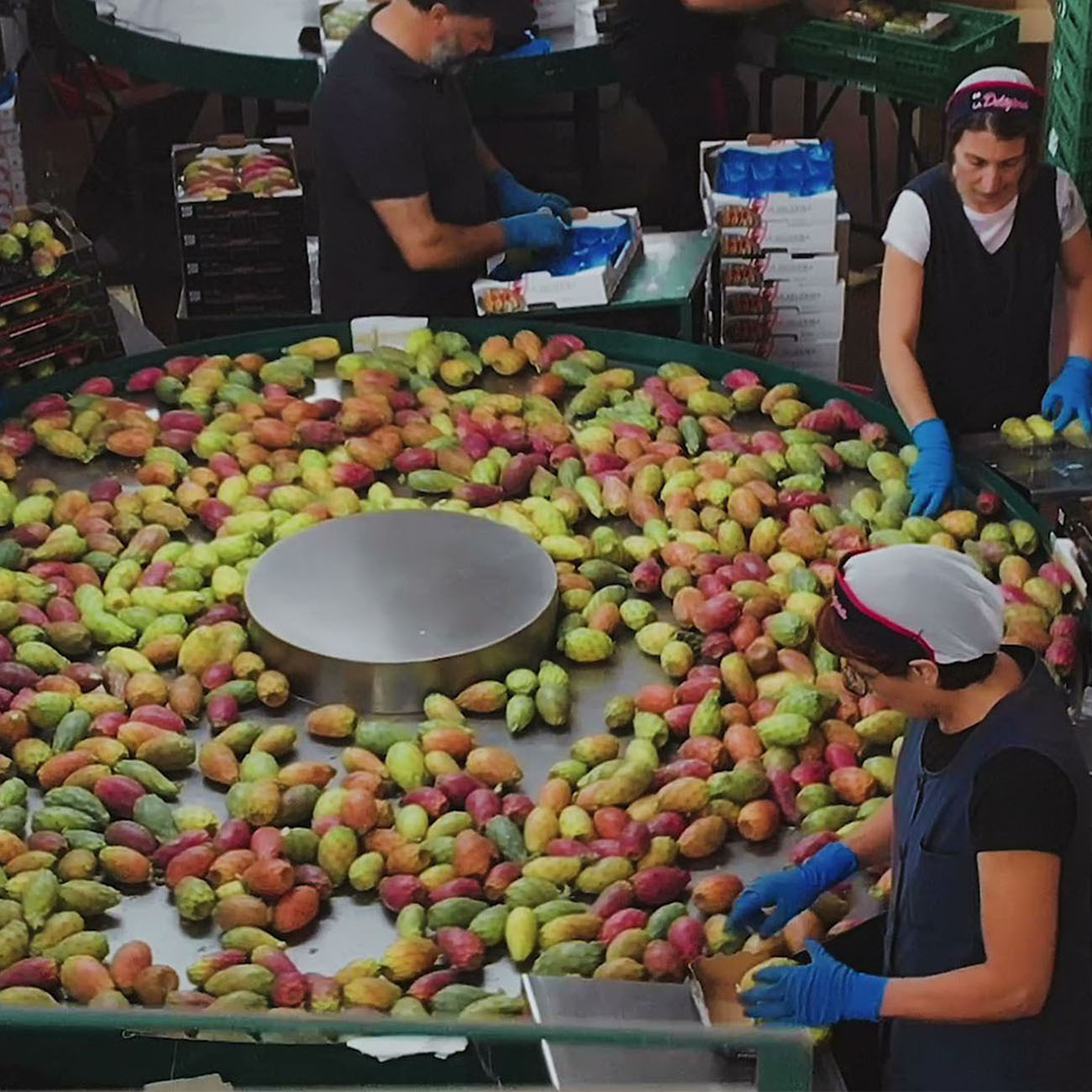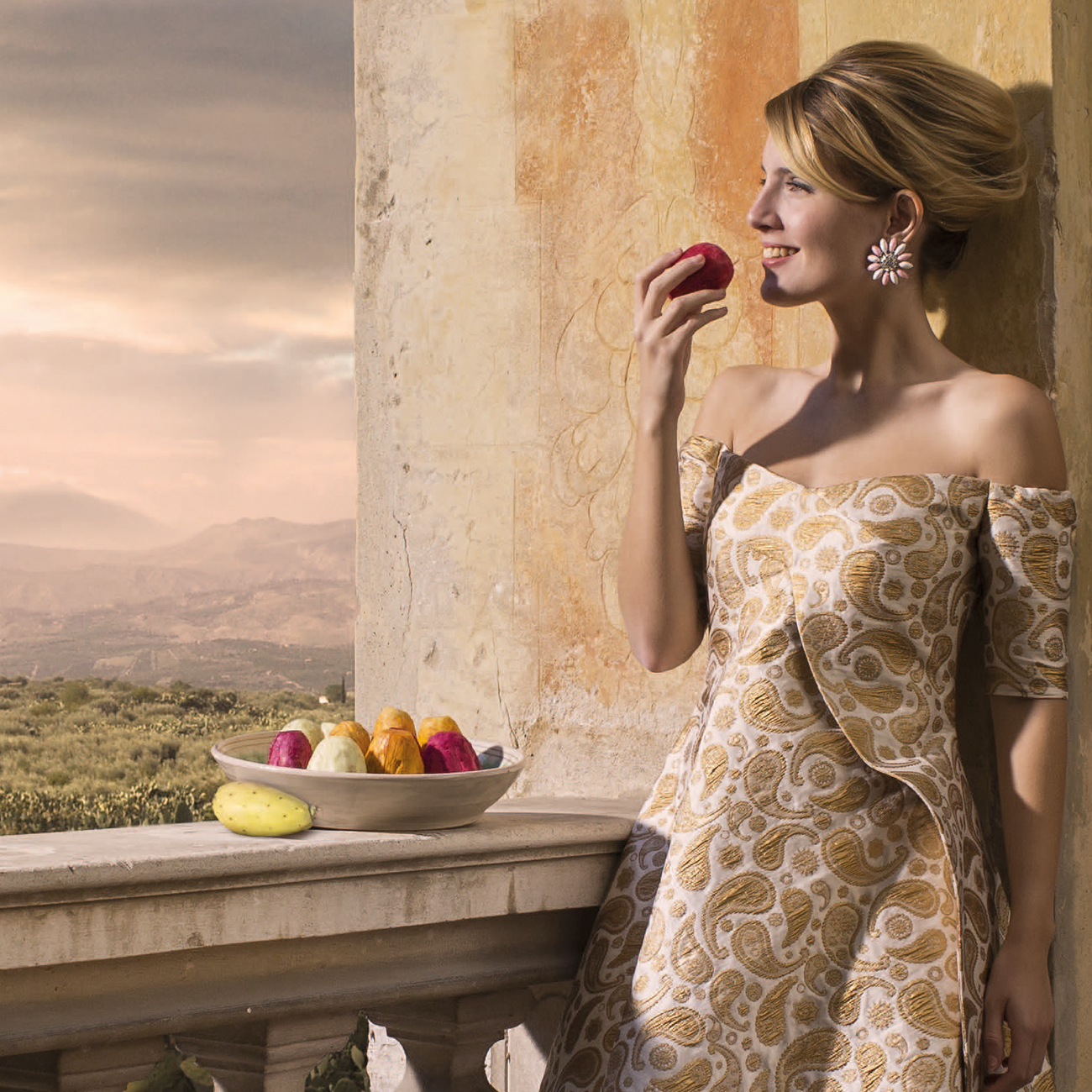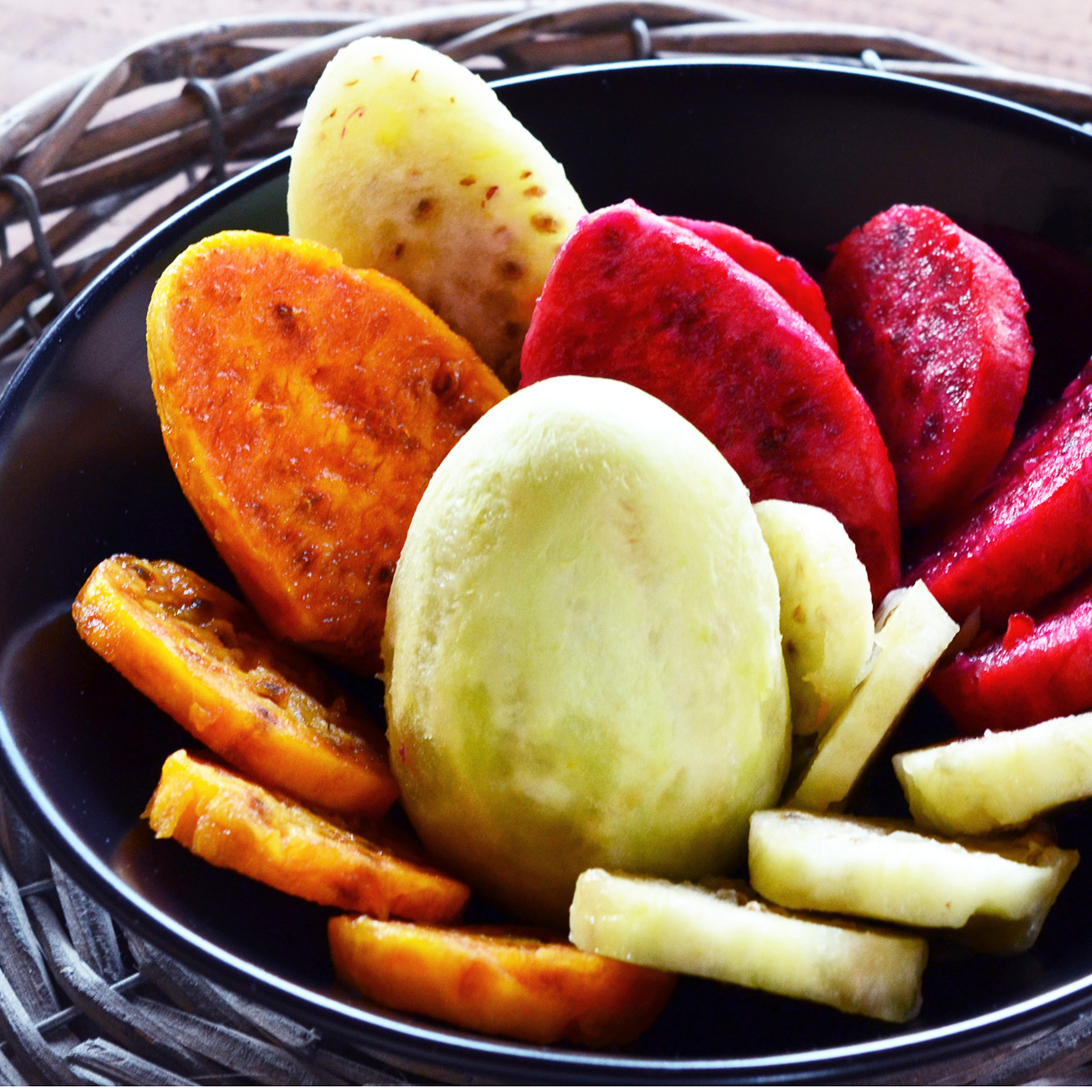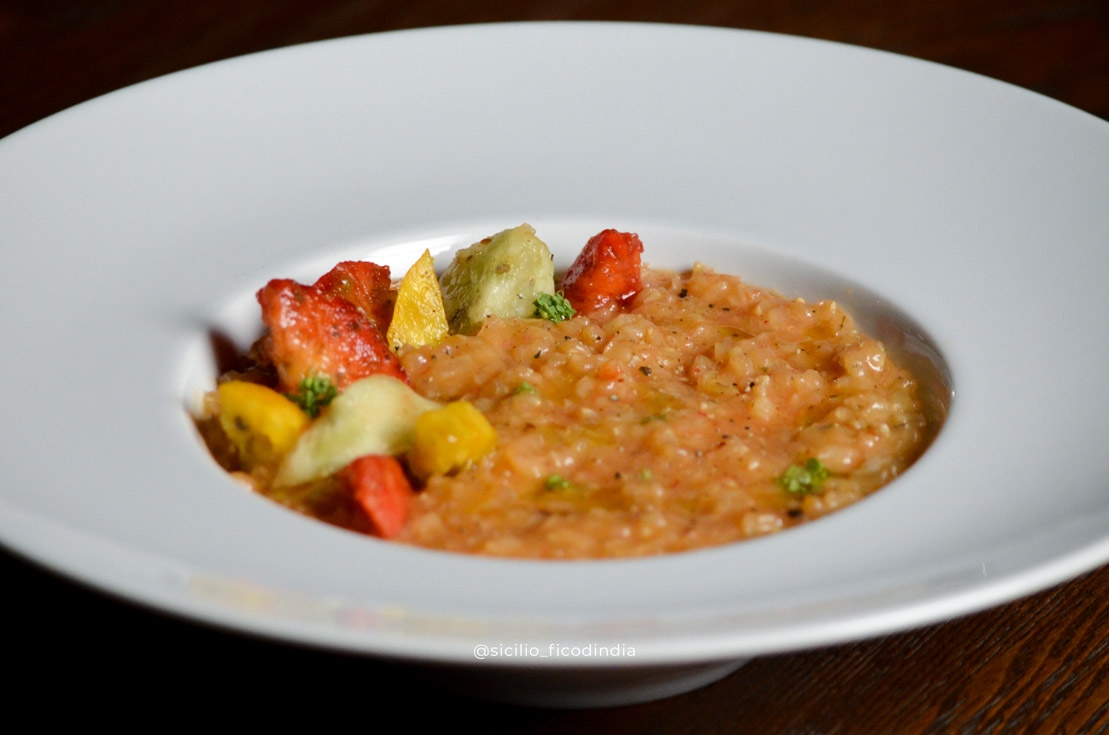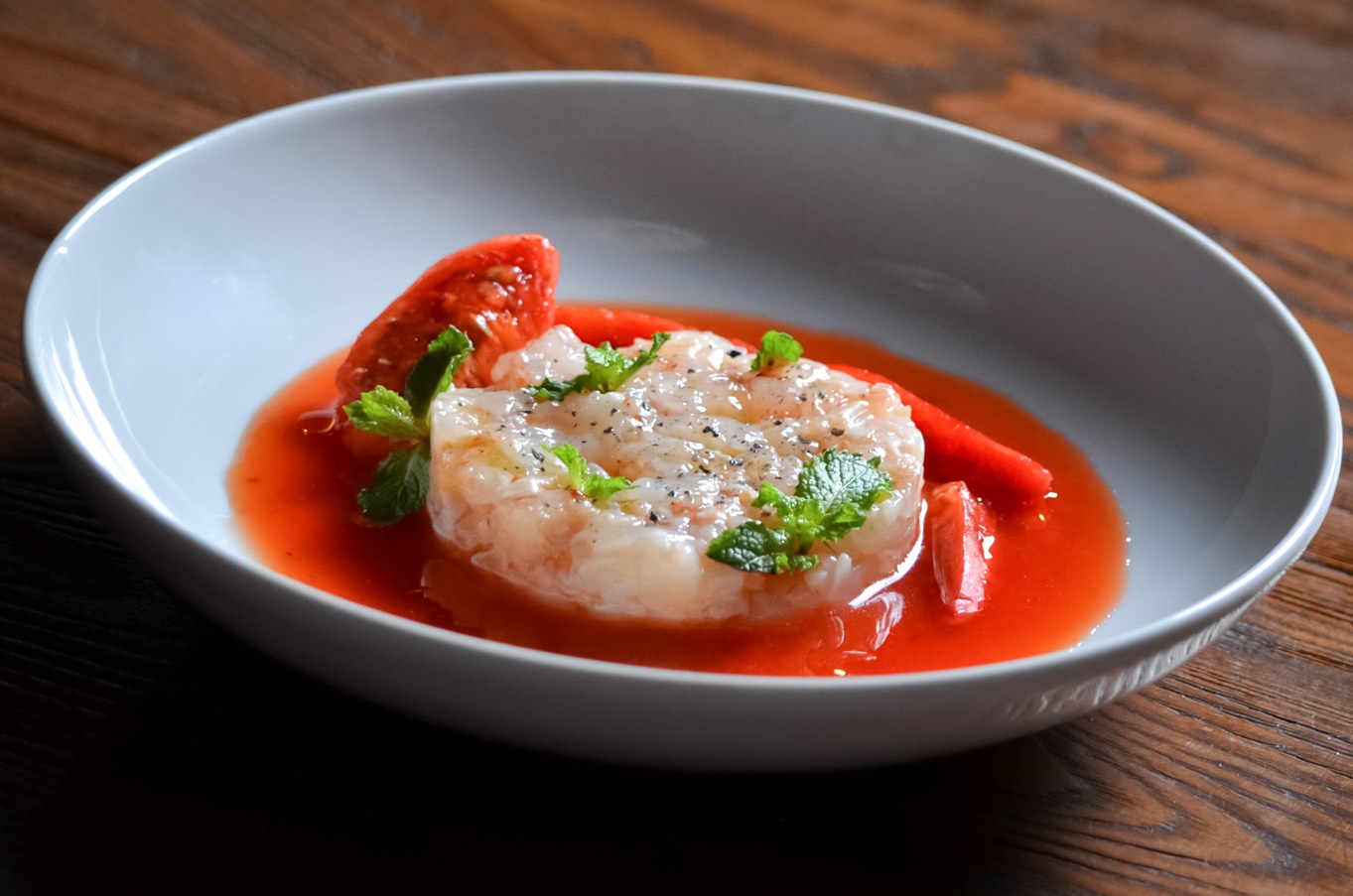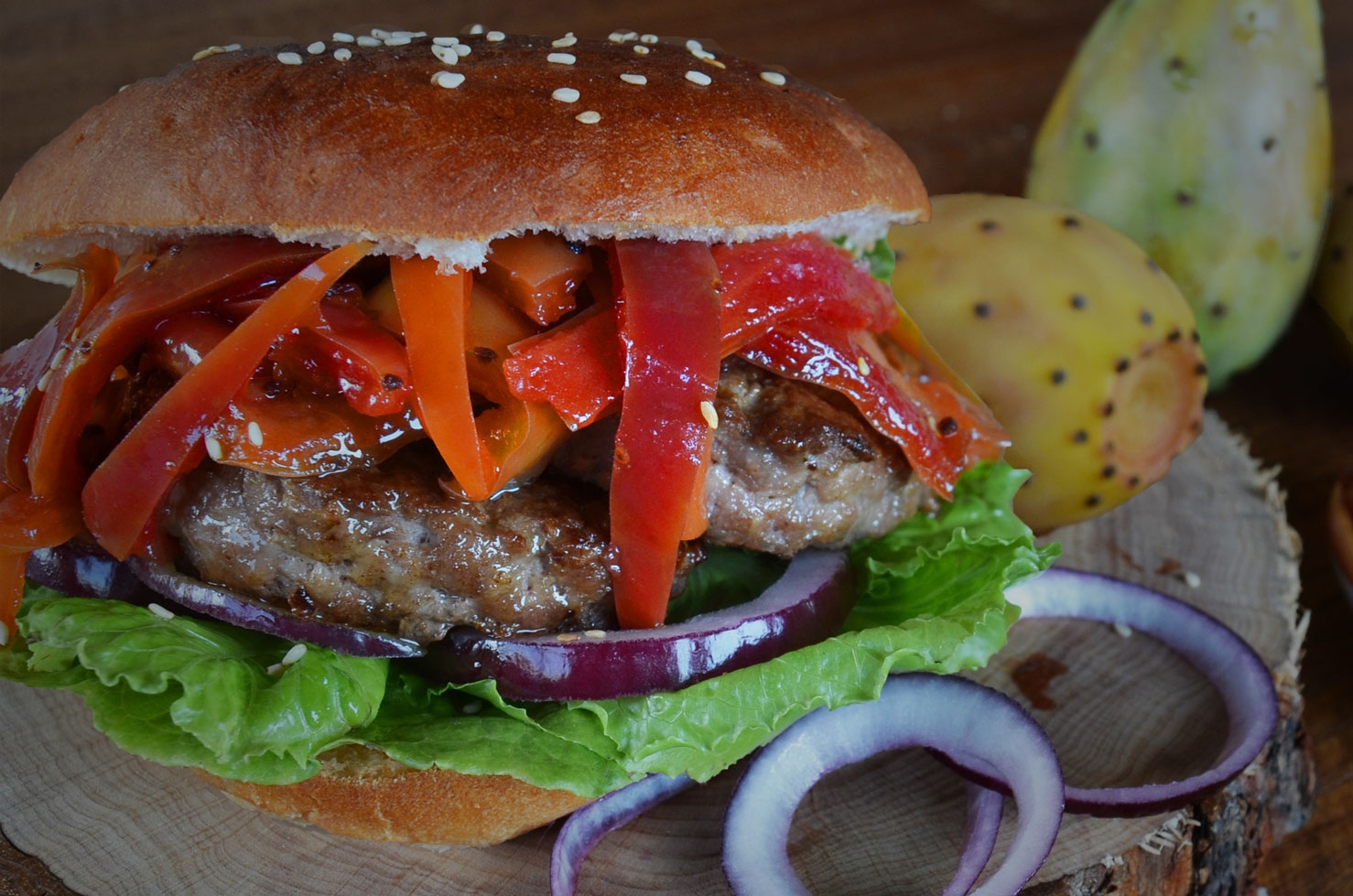History
A long JOURNEY THAT BEGINS FROM FAR AWAY
With the discovery of the Americas, many new products arrived in Europe, including Indian figs, so called because it was thought to be derived from the Indies. The cultivation of prickly pears had been practiced in Mexico for a long time: it is known from the chronicles of the Spanish conquerors and from the codes of the Mesoamerican populations, in particular of the Aztecs.
Prickly pears are born directly on the blades of the Opuntia Ficus Indica, plant with the typical characteristics of the so-called desert plants: it is a succulent that resists to high temperatures of long and dry summers. The fruits have variable dimensions for age of flowering and maturation.
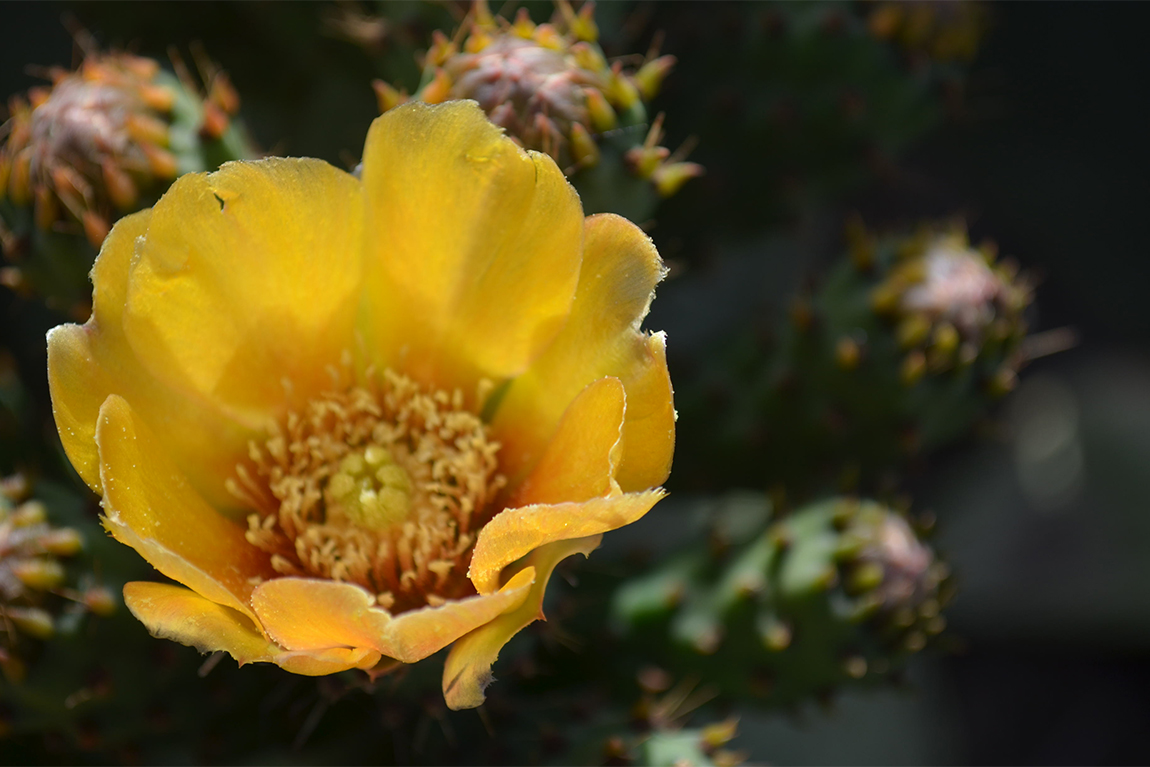
A volcanic fruit
Prickly Pears in Sicily
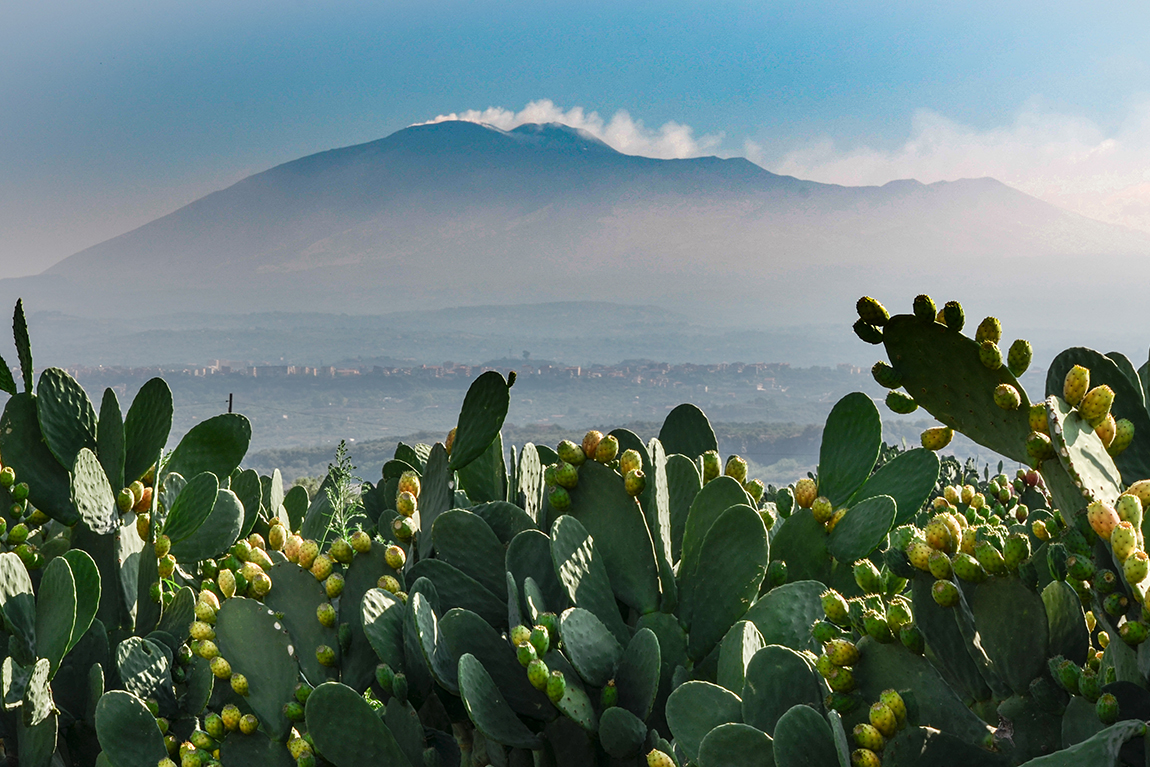
In Europe the prickly pear found a favorable climate in the Mediterranean area, and in particular in Sicily, land where the winds of the Mediterranean carry the salty air in the hinterland and the sun heats the lava earth, the ficodindia has become a true symbol of the Sicilian identity.
Thanks to the very high ability to adapt to semi-arid climates and the power of the roots that manage to dissolve the volcanic soils, the ficodindia has spread in the area of Etna becoming a valuable quality crop, and the first to receive the recognition of Protected Designation of Origin in 2003 with the name of Prickly Pear of Etna P.D.O.
3 Varieties
three colors for a unique fruit
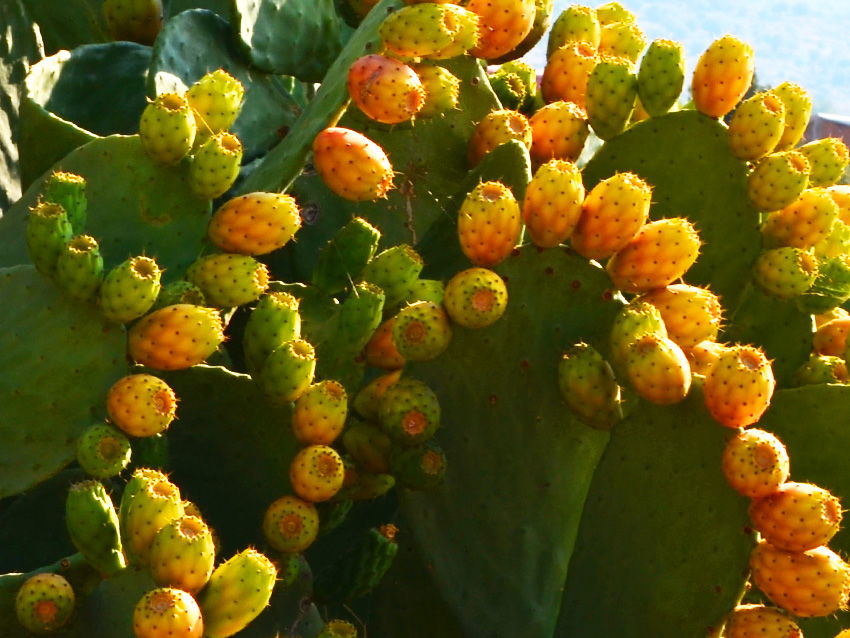
Yellow
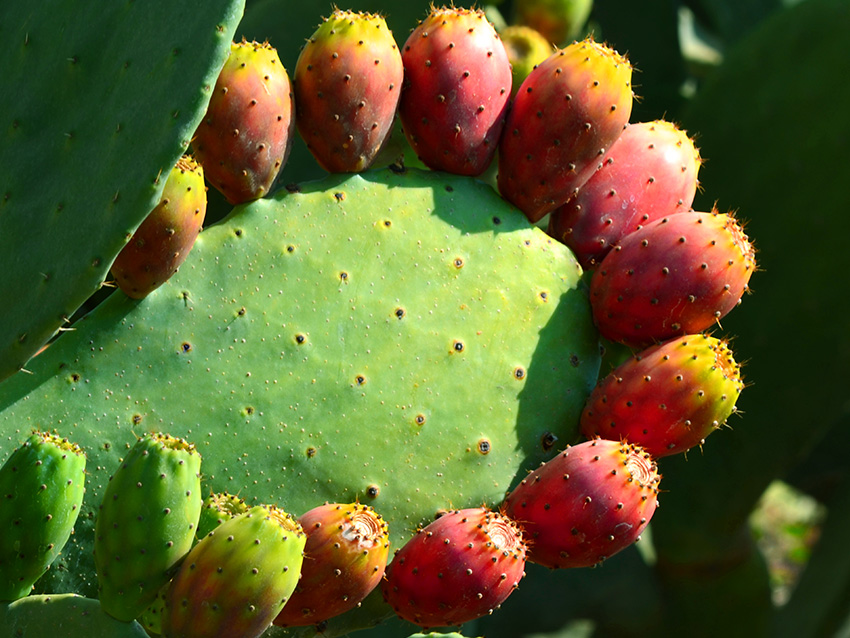
Red

White
Come si sbuccia
Tre bontà per un frutto unico
Production
From sicilian soil to your table
Like colored flames that stand out on the black stone, so grow the prickly pears on the slopes of Etna, symbols of an authentic Sicily rich in tradition, as demonstrated by the cultivation techniques used. The cultivation model is based on sustainability because the plant adapts to poor and sandy soilsd and requires modest water resources during the summer and practically no during the winter. In addition, the cultivation of ficodindieto benefits the territory, because the deep roots and the blades allow to prevent wind and water erosion of the land. The ficodindia of Etna D.O.P. is still collected manually. The skilled workers, carefully protected from the thorns, collect the fruits one by one, taking care to separate them from the blades, without damaging them.
Properties
AN HEALTHy EXPLOSION
Prickly pear is not only good and enjoyable, it is also rich in beneficial properties. It was used for medical preparations already in the traditional Aztec medicine, for its innumerable therapeutic properties and in particular the anti-inflammatory ones. Today, science has demonstrated the foundation of these traditional uses, which lie precisely in the exceptional content of nutrients within it.
The high fiber content and the presence of seeds help to promote intestinal transit and to increase the sense of satiety, making Ficodindia an excellent ally for the maintenance of weight-shape also thanks to the modest amount of sugar contained; is also composed of 80% water, and it’s very rich in vitamins A, group B and C, and minerals like iron, potassium, magnesium, calcium and phosphorus. It is therefore recommended to prevent osteoporosis, and its skin, as well as the cutting, are a cure-all for intestinal burning thanks to the anti-inflammatory properties contained in the mucilage inside them.



